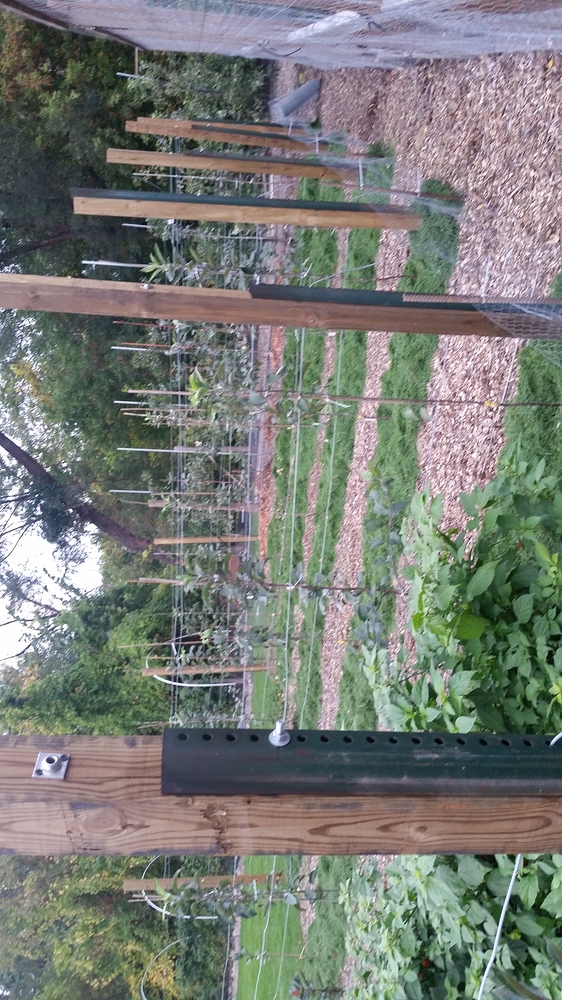Old topic but I’ve been thinking about this now that the summer watering season is done. I think I want to change over some of my orchard to small dwarf trees, where I’ve been growing vegetables. Trees in the range of 5 to 7 feet tall would be best. I don’t mind pruning which is part of puttering meditation for me.
My experiences so far:
On M27
Liberty - was 4 feet tall for many years - like 10 years maybe. I dug it up three years ago and replanted in a former vegetable bed. Now it’s about 6 feet tall. I am removing lower branches which tend to droop to the ground.
Honeycrisp - I keep as kind of a joke. At about 10 years old, still under 2 feet tall and just one stem. It gets 2 or 3 apples a year.
Karmijn - was about 5 feet tall in 5 years. All of the apples were split and ugly. I wondered if Karmijn needed a more vigorous rootstalk to nourish the apples. Removed it.
Jonagold - reached about 8 feet tall in 5 years. I moved it same as Liberty, now it’s 10 feet tall and 8 feet wide. I guess I could prune it back. I was careful not to bury the bud union. This tree is biennial for me, despite thinning. During nonbearing years it’s very vigorous.
I grafted some Northpole onto Bud9 this year. My original Northpole is on something way too vigorous, probably standard or semidwarf, and I want a shorter one. They took nicely. I don’t know if they will develop the typical thick stem of columnar apples, or remain too thin to bear more than a handful. Might know next year.
The trees that I want to grow small, are Gravenstein, Porter, Honeycrisp, Akane, Pristine, Rubinette, Summerred, and maybe less vigorous Jonagold although that M27 is very dwarfing for most and I don’t know what is smaller. Maybe M27 for the vigorous Porter and Gravenstein, and Bud9 for less vigorous Akane, and something more vigorous, maybe M26, for pokey growing Honeycrisp?
I don’t mind supporting them. I do want disease resistance.


 .
.